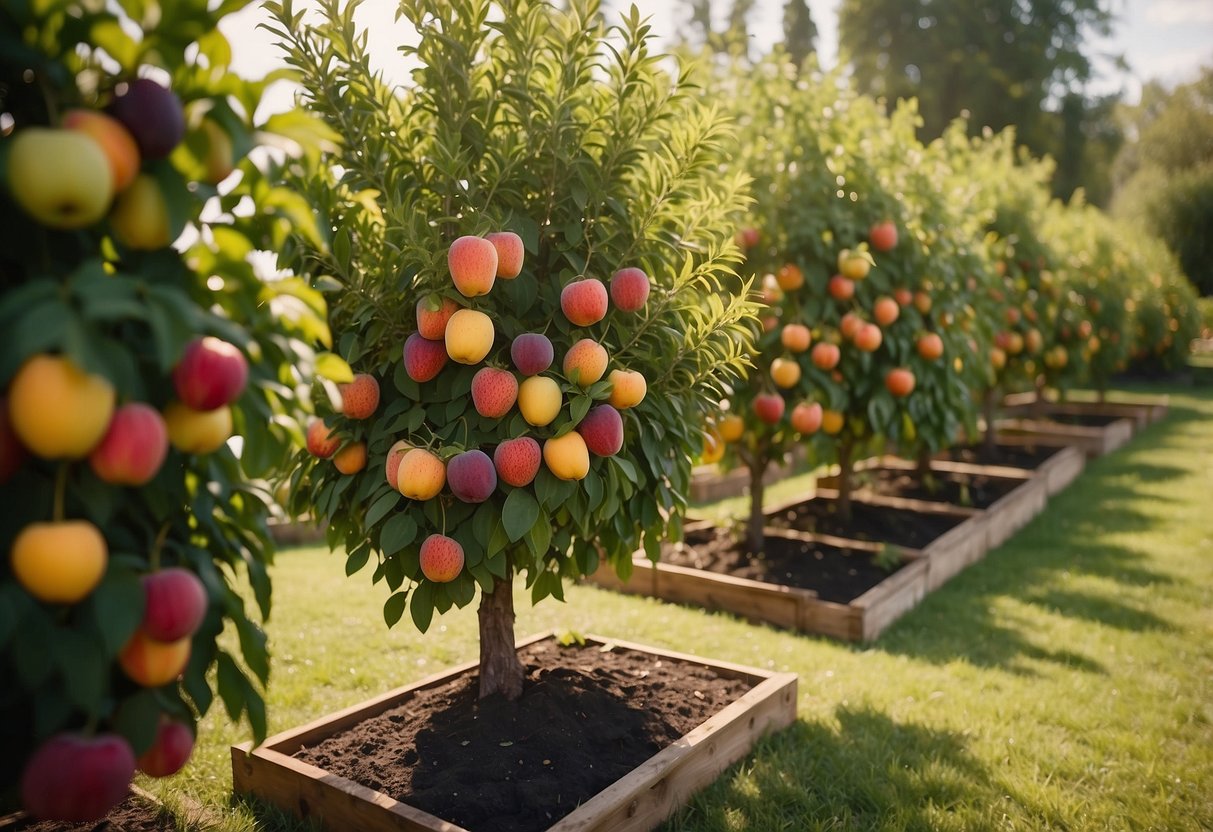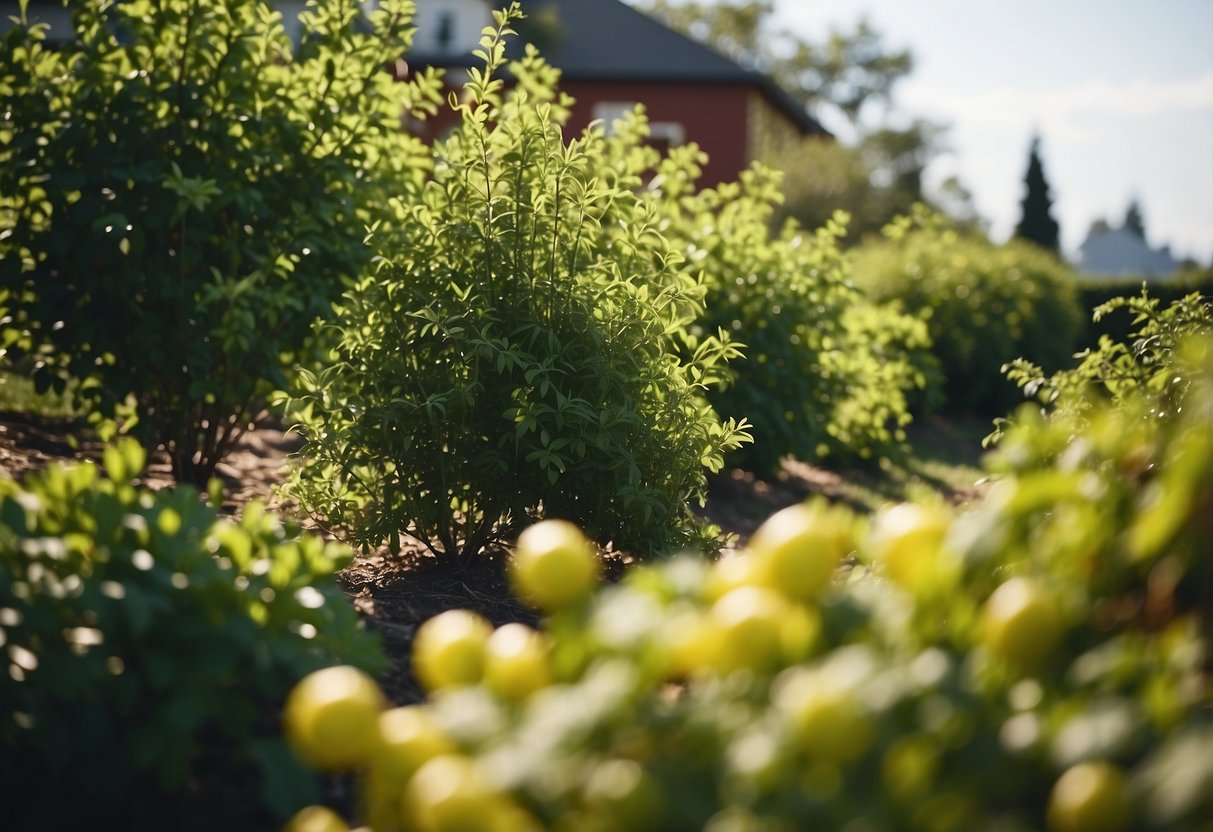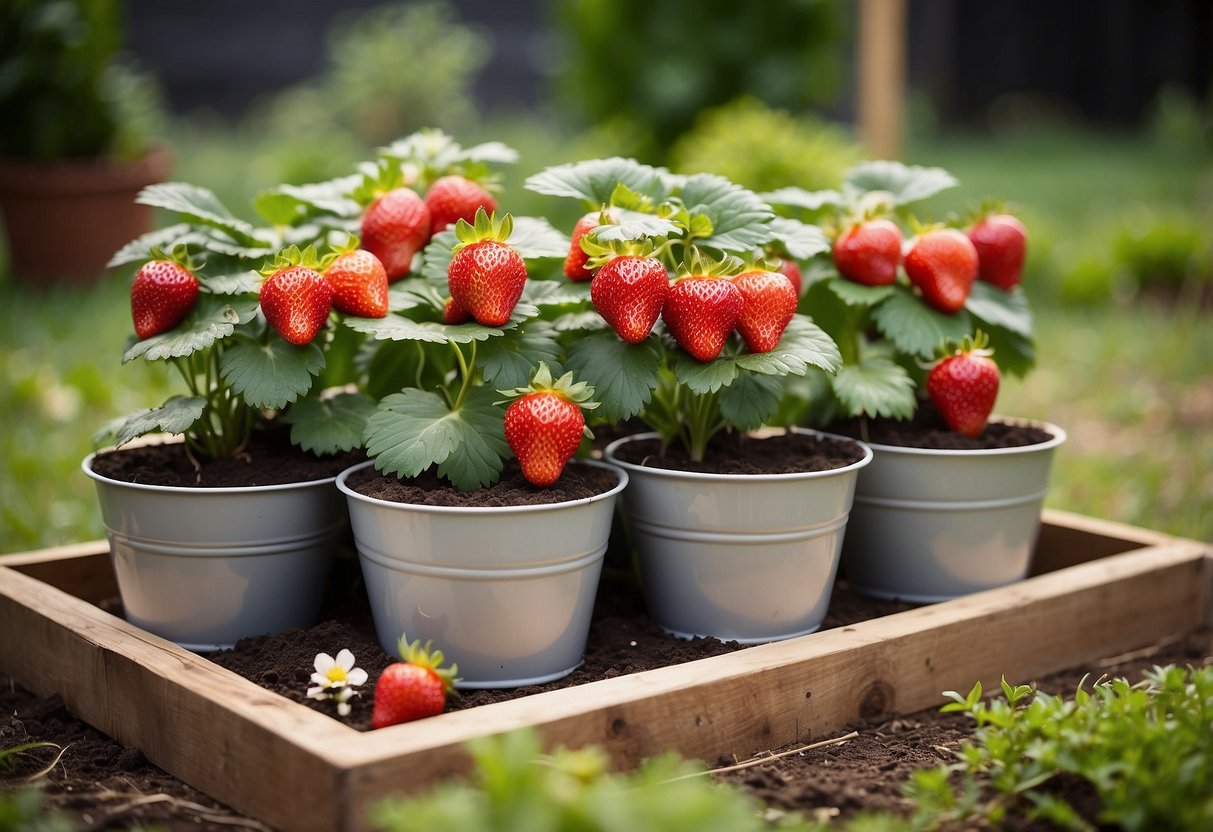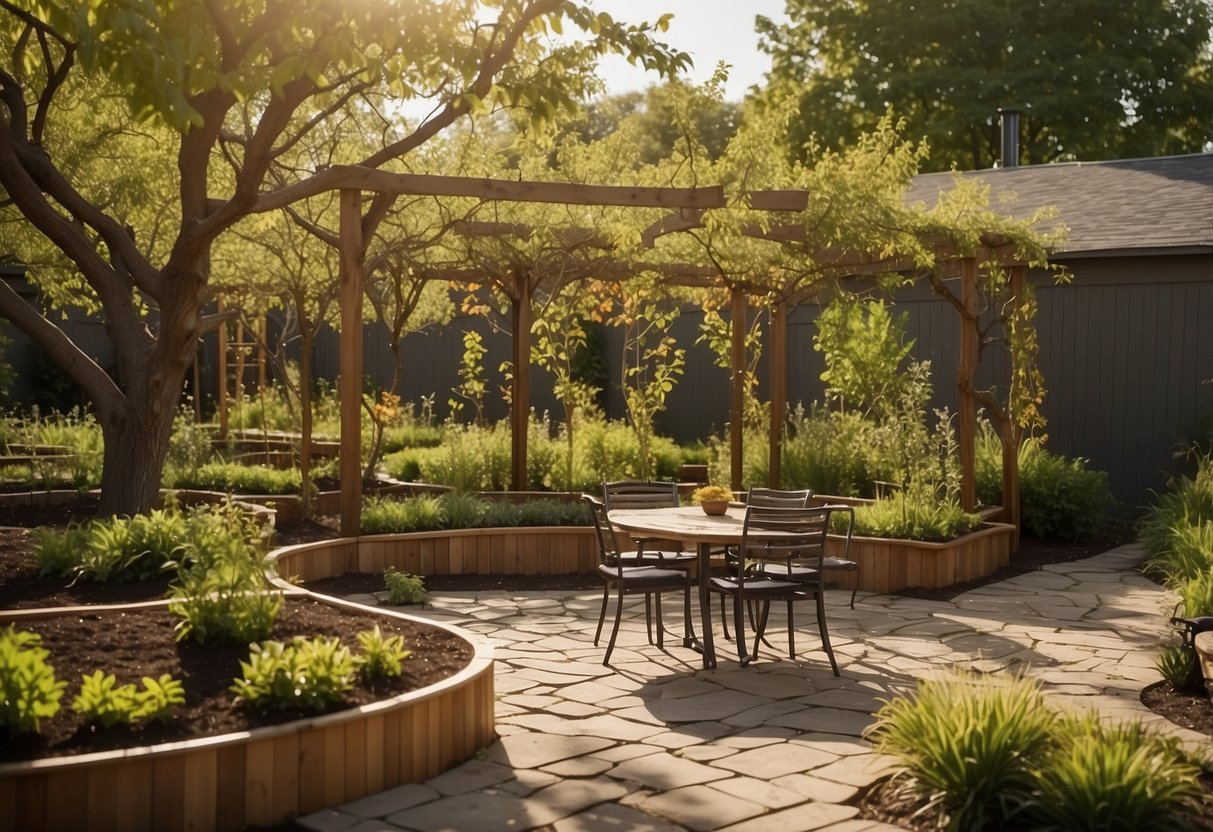Backyard Orchard Layout Garden Ideas: Tips for a Beautiful Harvest
Creating a backyard orchard can be a rewarding project that offers fresh fruits and a unique aesthetic appeal to your home garden. You can enjoy the beauty of blossoming trees and the satisfaction of harvesting your own produce without leaving your property. Exploring different layout ideas can help you design an efficient and visually pleasing orchard space in your backyard.

Planning is key to a successful backyard orchard. Understanding the best methods for tree placement ensures that each tree has ample room to grow and thrive. Whether you’re working with a small space or a larger area, there are layout designs that can maximize productivity and ease of maintenance.
1) Espaliered Apple Trees

Espaliered apple trees are a fantastic way to add beauty and fruit to your garden. By training the branches to grow flat against a wall or fence, you can create stunning shapes.
You’ll need at least 8 feet of horizontal space and strong support with wires or sturdy posts. Pruning is essential to achieve the desired shape.
Consider popular shapes like the cordon, fan, or candelabra. This method not only saves space but also makes harvesting easier. Plus, it can turn a simple garden wall into a living masterpiece.
2) Dwarf Citrus Trees

Dwarf citrus trees are perfect for small backyards. They take up less space but still produce a lot of fruit.
You can grow a variety of citrus trees, like oranges, lemons, and limes. They do well in pots, making them easy to manage and move around.
Make sure to water them regularly, especially when the top soil is dry. Find out more about starting your own citrus orchard here.
3) Berry Bush Border

Consider planting a berry bush border along the edges of your backyard orchard. Blueberry bushes or raspberry bushes are great choices. They not only provide delicious fruit but also add vibrant color to your garden.
Berry bushes can be a natural fence, creating a beautiful and productive boundary. You’ll enjoy fresh berries while enhancing your garden’s appeal.
4) Raised Beds with Fruit Trees

Raised beds are a great way to grow fruit trees. They help improve soil drainage and keep your trees healthy. You can use materials like wood, concrete blocks, or rocks to build them.
Place your raised beds in the sunniest part of your yard. Good sunlight ensures your fruit trees get the light they need. You can also make bottomless boxes with 2×12 redwood or cedar for this purpose.
Raised beds are easy to maintain and can be built in any shape or size to fit your space. They help to keep roots from getting too wet, which is important for tree health. Plus, raised beds can add a neat look to your backyard orchard. For more details, check this out.
5) Permaculture Garden

A permaculture garden focuses on creating a sustainable and eco-friendly ecosystem in your backyard. It starts with observing your garden’s natural ecosystem and planning accordingly. This method uses native plants, conserves water, and incorporates practices like composting.
Integrating elements such as rain gardens and efficient use of resources helps make your garden thrive. For more detailed steps, visit how to design a permaculture layout.
Consider setting up a composter early on to collect resources and minimize waste. This can help your garden become more productive and self-sustaining. Learn about specific steps at creating a permaculture backyard.
6) Vertical Herb Garden

Adding a vertical herb garden to your backyard orchard layout can save space and add a fresh supply of herbs. You can use hanging shelves with terra-cotta pots or create a slat wall with planters. For a rustic touch, consider a pallet wood three-tiered herb garden.
An Ikea bar cart can be transformed into a mobile vertical garden. This lets you move your herbs around as needed. Vertical bottle planters are another great idea—just paint and prepare the bottles, then hang them up.
7) Grape Vine Arbor

Grape vine arbors are a fantastic addition to your backyard orchard. They provide a beautiful structure for your grapevines to grow on and offer shade and a cozy sitting area.
A grape arbor can be made from various materials like wood or even metal like rebar, which is sturdy and long-lasting. Make sure to choose materials that suit your garden style.
When planning your arbor, keep in mind the best grape varieties for your climate. American grapes thrive in warmer, sunny areas such as Central California.
Building a grape vine arbor can transform your garden into a lush and fruitful oasis. Find designs and inspiration at Garden Season.
8) Pollinator-Friendly Flower Beds

Creating pollinator-friendly flower beds is a great way to support your backyard orchard. Choose flowers such as coneflowers, bee balm, and lavender. These plants attract bees, butterflies, and other pollinators.
You can create a colorful display by mixing blue, purple, and yellow flowers. These colors are especially attractive to bees. Including a variety of shapes and sizes helps attract different pollinators.
Keep your flower beds chemical-free to protect these insects. For more ideas, check out this guide on pollinator garden design.
9) Tiered Strawberry Planters

Tiered strawberry planters are a smart way to grow strawberries in small spaces. Each tier provides the right amount of sunlight for your strawberries. The top tier gets the most sun, perfect for growing tasty berries.
You can build a tiered planter using simple materials like wood. A 3-tier garden box is easy to make and looks great in your backyard.
A vertical planter box also works well. You can fit many plants in a small area, and it’s fun to build and maintain.
10) Mixed-Border Edible Hedge

A mixed-border edible hedge can provide privacy while also giving you fresh produce. It defines your garden space and can act as a windbreak.
Choose plants like blueberry bushes, rosemary, and hazelnuts. These not only look good but also produce food.
Add herbs and flowering edible plants for color and variety. You’ll enjoy both beauty and bounty.
Planning Your Backyard Orchard

Creating a backyard orchard involves selecting suitable fruit trees and designing a layout that maximizes space and growing conditions. This requires thoughtful consideration of types of fruit, varieties, and the arrangement of trees.
Choosing the Right Fruit Trees
Selecting the right fruit trees for your backyard is critical. Consider the climate and soil conditions in your area. For example, apple trees thrive in cooler regions, while citrus trees prefer warmer climates. Research the trees that grow well in your locale.
Look into dwarf or semi-dwarf varieties if space is limited. These trees are easier to manage and still produce a good amount of fruit. Also, consider the variety of fruit you enjoy most and what will thrive together.
Think about how these trees will mature. Some fruit trees can grow quite large, so ensure you have enough space for them to grow. Also, consider their care needs, such as watering, pruning, and pest control.
Designing the Layout
The layout of your orchard is essential for healthy growth and easy maintenance. Start by measuring your space. Sketch a plan, marking where each tree will go. Ensure you leave ample spacing between trees to avoid overcrowding.
Place taller trees on the north side of your garden to prevent them from shading shorter trees. A 15-foot by 15-foot plot can accommodate four to six dwarf fruit trees.
Install irrigation, like a drip system, to ensure trees get consistent moisture. Also, consider drainage. Avoid low-lying areas where water might collect and cause root issues. Good planning helps prevent problems such as fungal diseases and poor growth.
Consider all these factors to create a bountiful and manageable backyard orchard that fits your space and climate.
Garden Layout Tips

When planning your backyard orchard, focusing on sunlight exposure and companion planting can help your trees thrive and produce more fruit.
Maximizing Sunlight Exposure
Maximizing sunlight is crucial for your fruit trees. Choose a location that gets full sun, which means at least 6-8 hours of direct sunlight each day. Avoid areas with too much shade from buildings or large trees.
Plant taller trees on the north side of your garden to avoid casting shadows on shorter plants. For optimal growing conditions, space your trees properly. Typically, dwarf trees need about 8-10 feet of spacing between each other, while standard trees need around 15-20 feet.
Using a south-facing slope can benefit your trees too. A slight slope can help with drainage and allow your trees to capture more sunlight during the day.
Incorporating Companion Planting
Companion planting can improve the health and yield of your fruit trees. Some plants can deter pests, attract beneficial insects, or even enhance soil nutrients.
Marigolds and nasturtiums are great for repelling pests like aphids and beetles. Clover and alfalfa add nitrogen to the soil, nourishing your fruit trees.
Consider planting herbs such as garlic and chives around your orchard. These can keep harmful insects away and provide a fragrant addition to your garden.
Creating a diverse planting environment helps maintain a balanced ecosystem, leading to healthier trees and better fruit production.







